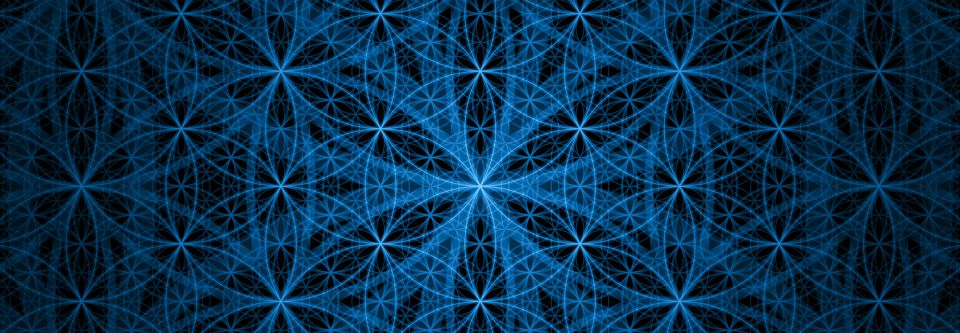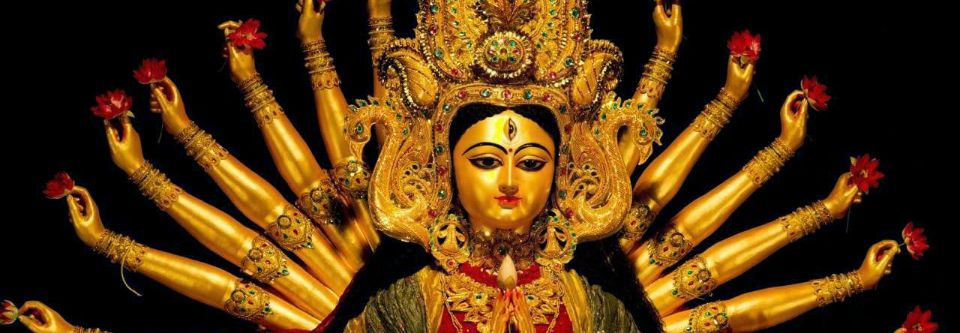Souls Ascend and Descend
“Although both [soul and spirit] are transpersonal, spirit takes you in one direction from the conscious mind or personality, and soul takes you in the other. The movement toward spirit is a journey of ascent, a journey of transcendence, while the movement toward your soul is a journey of descent, or what Thomas Berry calls “inscendence,” a journey that deepens.”
“Transcendence is commonly associated with the rising sun (and thus the compass direction of east), an ascension to the boundless emptiness of space, a journey into the upperworld, a union with the light — conversing with angels or the ascended masters. The soul path is often associated with the setting sun (and thus the direction of west), the descent to our earthy roots, into the wildness of the soil and the soul, a journey into the underworld, a voyage into darkness or shadow as in the apparent destination of the sun as it sinks below the western horizon.” —Bill Plotkin
http://www.natureandthehumansoul.com/newbook/chapter2_sc.htm
“Marion [Woodman] defines spirit as ethereal, transcendent, heavenly, immaterial, perfect, ‘out there’, ‘above’ ordinary life, and … masculine. Marion and [Bill] Plotkin believe that we grow in two different directions: ascend towards spirit and descend towards soul. The spirit path takes us on a journey to the upper world–a boundless, timeless union with the transcendent or God–whereas the soul path takes us on a journey to the lower world–a meandering make-out session with the immanent and our individual selves.” –Sera Beak Red, Hot, and Holy p.94
—
I’ve spent a good deal of time on this site articulating the difference between spirit and soul work. I think experientially understanding both the points of contact as well as the points of difference between our souls and spirits is an absolutely essential part of becoming human. On this I’m in total agreement with Marion Woodman and Bill Plotkin.
Describing the difference between spirit and soul as that of ascent (spirit) and descent (soul) is however wrong in my view. In this piece I’ll show why I believe that distinction is misguided and what unhelpful consequences occur as a result of approaching spiritual and soul practice in this way. On the surface, this might seem like an overly technical semantics debate, I think it does have important implications. Mistakes about the precise nature of the soul and the spirit and how to access and incarnate them inevitably create imbalances in practice, misinterpretation of experience, and cut off others form of spiritual and soul-based realization.
First I’ll explore the mistake around ascent and descent, showing how both the soul and the spirit can be said to ascend or descend (or both). Second, I’ll critique the false binary between spiritual as “above”, “out there”, and masculine versus the soul which is then “below”, “in here”, and feminine. Lastly, I’ll conclude with some thoughts on how we can more wisely understand the difference between soul and spirit.
But before going there I do want to emphasize how much I appreciate the work these individuals (Bill Plotkin in particular) have done to differentiate spiritual practice from soul work. This distinction has been a major gift in my own life and lies at the heart of the work I do now. For that I am deeply grateful. I do however think we need to nuance the understanding of the precise nature of that differentiation between spirit and soul.
Spirit and Soul Both Ascend and Descend
The idea that spirit is about ascent and soul is about descent is the core mistake in my view. The masculine/feminine distinction is a corollary of this central belief.
Here’s a portion of that quotation again:
“The spirit path takes us on a journey to the upper world–a boundless, timeless union with the transcendent or God–whereas the soul path takes us on a journey to the lower world–a meandering make-out session with the immanent and our individual selves.”
This framework sets up a false dichotomy, one not supported in the great spiritual traditions themselves.
For example, in shamanism there is the classic description of the three worlds: upper, lower, and middle.
The upper world is what people typically call heaven but would be better termed paradise. The Elysian Fields of Greek mythology, the happy hunting grounds, the realms of angels, deceased ancestors and loved ones, the abode of Plato’s Archetypes, the Brahmaloka, and the realm of gods in Buddhism.
The lower world is the psychic reality of earth. It’s a realm where we burn contracts, retrieve pieces of our soul, and commune with the elements of fire, earth, air, and water.
The middle world is our world. To psychically journey in the middle world is actually the most complex and potentially dangerous of the three worlds (as it turns out).
Together these three worlds form a coherent unified order. The soul is what transits all three realms.
In shamanic practice one learns first to descend to the lower world. I imagine beginning with descent is the source of the confusion that soul is about descent only. But then one learns to journey to the upper worlds. Finally one learns to journey in the middle world.
All three of those worlds are accessed through the soul. It is true that the soul descends into the underworld, like Orpheus. It’s also true however that the soul ascends to paradise–think Dante meeting Beatrice in Paradise in The Divine Comedy or Prophet Elijah being taken up to paradise. Journeying in the middle world is neither descending nor ascending; middle world journeys are in a sense horizontal, neither up nor down but rather further within.
So the soul can descend, ascend, or move laterally.
Much of what people describe as belonging to the path of ascent belongs to the soul not the spirit. It’s the soul that unites to God. Our spirit nature does not unite to God (it is of the same essence as God, hence it does not need to unite to God). Countless however are the stories of souls flying to heaven and uniting with God.
Soul is energy, communion, proper boundaries, just and harmonious relationship, voice, vitality, and dreaming.
Spiritual realization on the other hand is not so much about flying up to heaven as it is about realizing heaven as the essence of everything as it is on earth. The Kingdom of Heaven on Earth.
Now it’s true that spiritual realization is often called Waking Up (there’s ascent of spirit). With a spiritual teacher like Saniel Bonder however it is called Waking Down (descent of spirit). In this video Adyashanti and Loch Kelly talk about how their spiritual realization started more in their heads and then descended to their hearts.
So in the realm of spirit, we also see a similar pattern of possible ascent as well as descent.
In the first chapter of The Gospel of John it states, “In the beginning was Wisdom and Wisdom was with God and Wisdom was God…and Wisdom became flesh and dwelt among us.”
That’s a descending model of spirit. Jesus, as the incarnation of God’s Wisdom, “comes down” from above. In fact all incarnational models of spirituality are descending by their very nature.
Or consider the words of the great Padmashambhava, father of Tibetan Buddhism on spiritual realization: “Descending with The View, I climb the mountain of cause and effect.”
There’s spirt in both ascending and descending form in one integrated movement.
As the Heart Sutra says, “the formless is form.” The other world is this world. The transcendental reality is expressed precisely in, as, and through concrete materiality. (To use the fancy terms transcendence is experienced in and as immanence).
The Zen tradition is particularly alive to this aspect of spiritual realization–that it is not really about ascending or descending, it simply is attuned to What IS.
Frog jumps in pond, plop.
Rain on roof, marvellous beyond wonder.
Daisies float in the breeze, stupendous.
Spiritual realization is the realization that everything has but One Nature, One Condition, One Essence. Or in more Buddhist language, it is the realization that there is no separate existence, everything is empty (shunyata) of such qualities in an inseparable marvellous, seamless display.
No one needs go up or down or sideways to realize this truth. They simply need to see.
It is true that spiritual realization–as Adyashanti and Loch Kelly describe–tends to start in the head or mind. This probably is why spirit is often seen as (only) ascending. Just as with the soul it starts with descent to the lower world but that is not the final movement of soul.
It’s certainly true that spiritual realization or enlightenment can stay stuck in the head/mind. It can however continue to deepen and it does so by descending further down in the bodymind, to the throat, the heart, the belly, etc.
So to reiterate, souls can ascend, descend, as well as ‘move sideways’. So can spirits. Consequently, the metaphor of directionality doesn’t help us particularly discern the differences between soul and spirit.
Masculine Spirit versus Feminine Soul
If the metaphor of directionality doesn’t help us in distinguishing soul and spirit, I don’t think metaphors drawn from the realms of gender and sexuality are any better (a subject I’ve written on elsewhere).
It is correct to say that in many traditions the soul is described as feminine. But then again spirit can and is often described as feminine–e.g. Lady Wisdom. The word spirit in Latin is masculine in its gender casing (spiritus) but in Hebrew is feminine (ruach) and in Greek is neuter (pneuma).
This confusion results from the earlier mistake of seeing spirit as ascending and out there, rather than the essence of all that is and soul as descent, rather than the intrinsic particularity, relationality and subtlety of all existence.
Once spirit is seen as “out there” and “above” then it’s very easy to conflate that out there, aboveness with being masculine and “down here”, “within” being feminine. And typically in this kind of presentation there’s a not very subtle biasing towards the feminine over the masculine. Worse still, while feminine is not supposed to mean women and masculine is not supposed to be men, in practice those words tend to evoke precisely those understandings. Hence this presentation not-so-subtly is prejudiced towards women being seen as more important carriers of truth. As a consequence, the masculine very often becomes the holder of our shadows, the things we don’t want to acknowledge in ourselves.
In other words, I think we’re taking our metaphors way too seriously in this realm. Yes many traditions speak of earth as mother and sky as father but earlier Indo-European traditions actually reversed it with the heavens being feminine and earth being masculine. And ultimately of course neither is actually masculine nor feminine.
Offering this critique is not an attempt to reassert masculine spirituality (or worse some kind of patriarchal view of spirituality). For one I don’t really buy all that much into a concept of the masculine. Two, I think teasing out the differences between soul and spirit are hard enough on their own terms. It’s only made that much more difficult by adding in the the very confusing and complex interweaving that is the relationship between our concrete historical gender patterns, our biology, and our sexual orientations and how those relate to spiritual experiences, insights, and the spiritual realm itself. (For those interested in exploring that topic in greater detail, see this piece I wrote on the subject.)
Resolution
What seems on the surface like a simple statement about soul being about descent (and feminine) and spirit being about ascent (and masculine) turns out to be a whole messed up jumble. Once again, I do think the distinction between soul and spirit is a very powerful one, one that is significantly missed in much spiritual teaching and literature. Again, I want to stress I’m in deep agreement with Marion Woodman and Bill Plotkin on that point.
I think a better way of proceeding comes from those authors themselves:
The sentence immediately before the quotation from Sera Beak with which I began this piece reads:
“Here’s another perspective I found helpful during this time, offered by Bill Plotkin, author of the masterpiece Soulcraft, which makes the distinction between spirit and soul: soul is our unique core, while spirit is that which we all have in common.” (ibid, p.94).
I think this view is much better.
I mentioned that we can define spiritual awakening as the realization that there is Only One Condition of all conditions, One Nature to all natures. Spiritual realization is to experientially grasp that all reality has but One Substrate. Or again in Buddhist language that there is a Zero Quality to all reality. There is no separation. The whole is Seamless.
Because of that we may say there is only One Spirit. Spiritual realization is the dying or dropping away of our normal self-centered frame of reference. What is left in the wake of the dropping away is the sense of The All, The One, What IS. This is the same for everyone.
In Plotkin’s words, spirit “is that which we all have in common” because there is only One (or Zero), not Two.
Soul then is unique expression. Each soul is a distinct expression. Like rays coming off of the Sun. There is but One Sun (Spirit) but it is expressed as many rays (Unique Souls).
It is not that all the rays need to be added up to make up the Sun. It is that the fullness of the Sun is intrinsic to each ray and each ray is simply that–it’s own utterly singular expression of The Whole. The ray is not separate from the Sun but nevertheless each ray is unique. That is the paradoxical wisdom of Soul.
What all of this points to is that soul work is very different from spiritual work. Each form of practice applies to a different aspect of our human incarnation and therefore both are intrinsically valuable and vitally necessary. When we stick to the precise understanding of spirit as recognition of Oneness (or Zeroness) and soul as expression of Distinctness then we have the capacity to stick to the actual experience and work itself. In my view, when we start adding in complicating ideas over the top like spirit is out there and masculine and ascending or soul is in here and feminine and descending then we inevitably create confusion.










